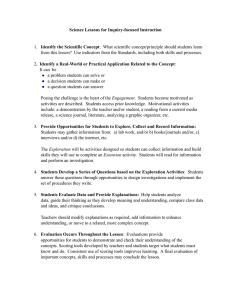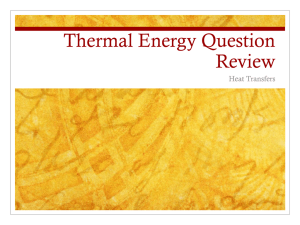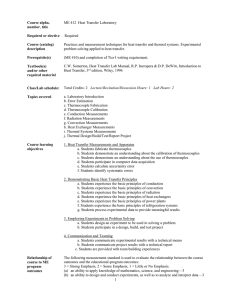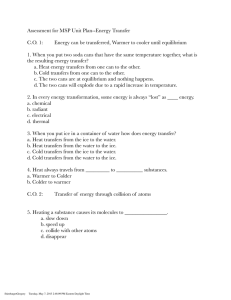Mechanical Engineering and Mechanics MEM 345 Heat Transfer Fall 2006/Spring 2007
advertisement
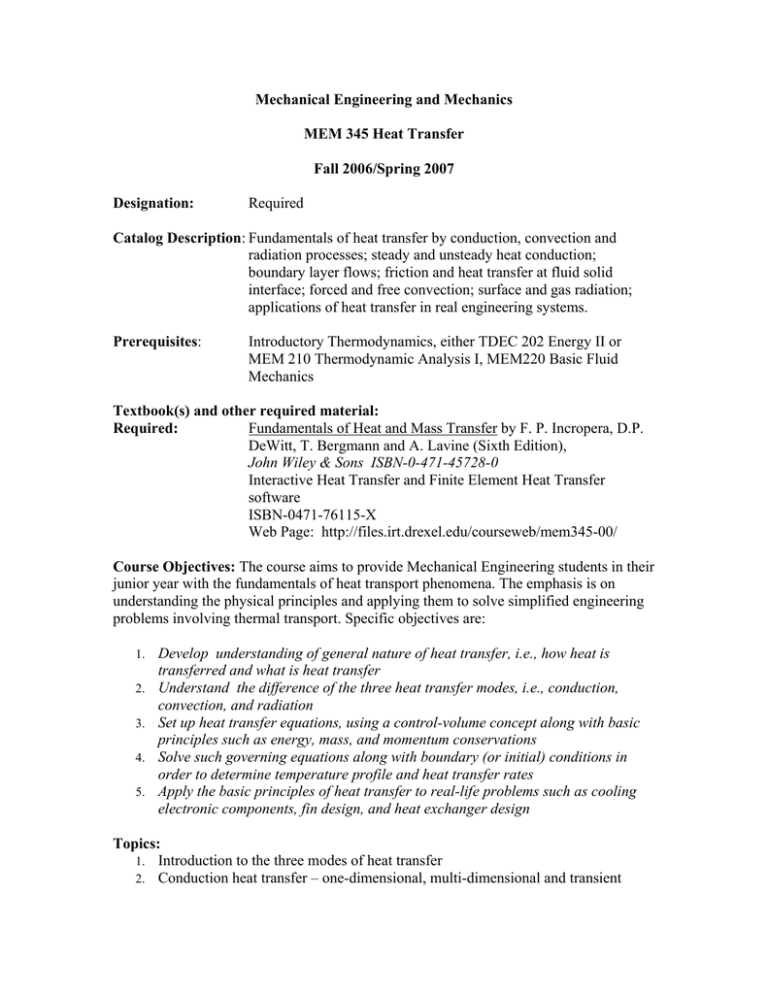
Mechanical Engineering and Mechanics MEM 345 Heat Transfer Fall 2006/Spring 2007 Designation: Required Catalog Description: Fundamentals of heat transfer by conduction, convection and radiation processes; steady and unsteady heat conduction; boundary layer flows; friction and heat transfer at fluid solid interface; forced and free convection; surface and gas radiation; applications of heat transfer in real engineering systems. Prerequisites: Introductory Thermodynamics, either TDEC 202 Energy II or MEM 210 Thermodynamic Analysis I, MEM220 Basic Fluid Mechanics Textbook(s) and other required material: Required: Fundamentals of Heat and Mass Transfer by F. P. Incropera, D.P. DeWitt, T. Bergmann and A. Lavine (Sixth Edition), John Wiley & Sons ISBN-0-471-45728-0 Interactive Heat Transfer and Finite Element Heat Transfer software ISBN-0471-76115-X Web Page: http://files.irt.drexel.edu/courseweb/mem345-00/ Course Objectives: The course aims to provide Mechanical Engineering students in their junior year with the fundamentals of heat transport phenomena. The emphasis is on understanding the physical principles and applying them to solve simplified engineering problems involving thermal transport. Specific objectives are: 1. 2. 3. 4. 5. Develop understanding of general nature of heat transfer, i.e., how heat is transferred and what is heat transfer Understand the difference of the three heat transfer modes, i.e., conduction, convection, and radiation Set up heat transfer equations, using a control-volume concept along with basic principles such as energy, mass, and momentum conservations Solve such governing equations along with boundary (or initial) conditions in order to determine temperature profile and heat transfer rates Apply the basic principles of heat transfer to real-life problems such as cooling electronic components, fin design, and heat exchanger design Topics: 1. Introduction to the three modes of heat transfer 2. Conduction heat transfer – one-dimensional, multi-dimensional and transient 3. 4. 5. 6. Introduction to Finite difference techniques Convective heat transfer Radiation heat transfer Heat Exchangers Class Schedule: 3 hours/week lecture (3 credits); 2 hours of recitation/ week (1credit) Contribution to Professional Component: Contributes toward the 1 ½ year of engineering topics appropriate to developing the ability to work in the thermal systems area. Prepares students for courses in thermal system design. Relationship to Program Outcomes: Outcomes a - k a. An ability to apply knowledge of mathematics, science and engineering b. An ability to design and conduct experiments as well as to analyze and interpret data c. An ability to design a system, component or process to meet desired needs d. An ability to function on multidisciplinary teams e. An ability to identify, formulate and solve engineering problems Content Explanation 2 This course is based on developing calculus-based mathematical models for heat transfer in physical systems. 1 NA 2 0 2 f. An understanding of professional and ethical responsibility g. An ability to communicate effectively 1 h. The broad education necessary to understand the impact of engineering solutions in a global/societal context i. A recognition of the need for and an ability to engage in lifelong learning j. A knowledge of contemporary issues 1 k. An ability to use the techniques, skills and modern engineering tools necessary for engineering practice 2 Prepared by: 2 The assigned heat transfer problems often involve practical devices or systems. NA The assigned problems and the recitations train the students to formulate and solve engineering problems. This is emphasized as part of the engineer’s overall responsibility. Oral presentation of assigned problem is often required in recitations. The effect of thermal systems on the environment (pollution, greenhouse effect, etc.) and society are covered. 0 NA 0 Design of thermal systems is related to contemporary issues (global warming, efficient HVAC devices etc.). Students use IHT software package to solve problems and prepare reports. Dr. Bakhtier Farouk, 14 November 2006 Evidence Homework, Quizzes, Examinations NA Homework, Quizzes, Examinations NA Homework, exams, design project Classroom discussion of environmental issues NA Classroom discussion of environmental issues; selected homework assignments Selected homework assignments Homework




